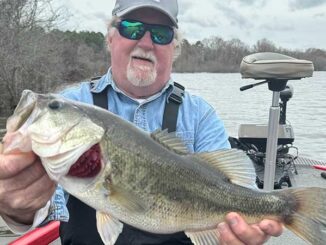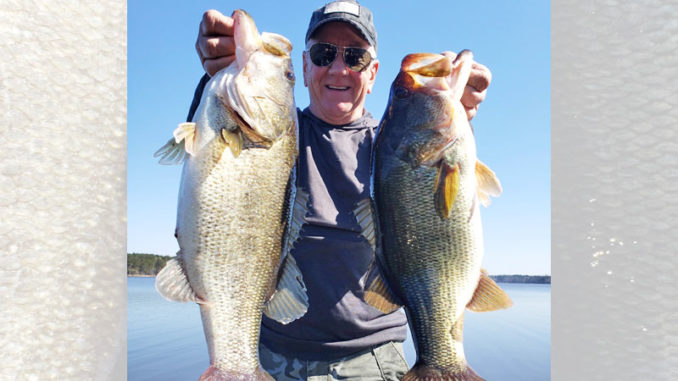
Put ‘power’ into your ‘finesse’ fishing with some interesting rig-lure combinations that will trigger bass to bite while others struggle.
In the word association game, “finesse” and “heavy” are not typically connected. However, there exists a strategic melding of the two concepts in which “heavy finesse” tactics can yield big results in the bass-fishing world.
More of a concept than a specific rig, this style of bass fishing is Contentsa problem solver — an opportunity maker, of sorts.
As Toledo Bend Guide Darold Gleason pointed out, heavy finesse fishing is more about tweaking, retooling and retrofitting than creating something new and novel.
“When I think of ‘heavy finesse,” I may throw a Carolina rig on 15- to 17-pound line with a 1-ounce weight, but I’ll throw a trick worm on the back of it, which to me is more finesse,” Gleason said. “Instead of throwing a creature bait, which is big and bulky, I’ll throw a (smaller) worm.”
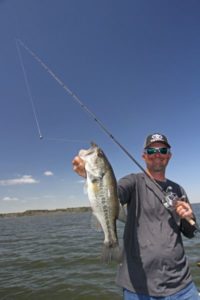
Gleason said this setup is a good bet on those days when the bite has gotten tough or he’s gotten into the midday lull. You know: When he’s seeing fish on the electronics, he’s tried other presentations that didn’t work but he’s convinced the fish will still bite.
Likewise, instead of drop-shotting on spinning gear with 8-pound line, Gleason might use a baitcaster with a beefier drop-shot on 14-pound line and heavier weight with a 10-inch worm.
“If I’m getting a lot of fish pecking at my Texas-rigged worm and I’m missing the bites, a lot of times I think they’re suspended a foot or 2 off the bottom and they’re pecking at the weight as it goes by them,” Gleason said. “I’ll go to a heavy drop-shot rig to get the bait off the bottom just enough to get the worm in front of them.”
Drop-shot
Probably the most widely used of the finesse rigs, a drop-shot’s conversion to heavy finesse duty merits deeper examination.
For starters, FLW pro Larry Nixon said he’ll use the technique in lakes with off-colored water. Decreased visibility allows anglers to conceal heavier tackle while leveraging the greater water displacement of a big worm, a creature bait or a craw body.
Some anglers, like FLW Tour pro Stetson Blaylock, refer to heavy drop-shot tactics as “power-shotting” — essentially the strategy of blending of power fishing with the poster child for light-line techniques.

It’s less about stealthy drops and long waits while reluctant fish make up their minds. Rather, it’s simply a presentation style used to cover water and show the fish a different kind of look.
This is not to knock thin line and light spinning outfits. But baitcasting gear with line stout enough for flipping and spinnerbait duty serves well the objectives in which power-shotting applies.
In short, you want to get the fish away from cover and heading topside ASAP.
Power-shot
Over inhospitable bottom, power-shotting offers the benefit of minimal contact with entangling cover. Whereas a Texas-rigged plastic or a jig might frequently hang up, a power-shot — particularly one with a slender, cylinder-style weight — will typically slip across or through any threatening snags while keeping the bait visible and accessible.
Blaylock Texas-rigs his baits to further minimize snagging concerns.
“Keeping that bait off the bottom just allows those fish an easier way to see it coming, rather than just dragging it right on the bottom like a Texas rig,” Blaylock said. “And it’s just a little different approach. It’s not so much about what it does — it’s just about giving them a different look.
“If you’re fishing (deeper water) and you’re catching them on a crankbait, those fish are more than likely suspended. If you take that power-shot and cast it out there, a lot of times they’ll have it before it ever hits bottom.”
Upsized drop-shot
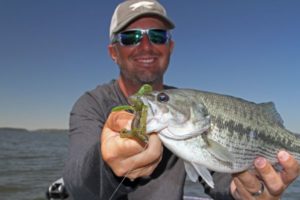
In terms of presentation diversity, Nixon said an upsized drop-shot does a good job of replacing a big Texas-rigged worm or jig for targeting fish near the bottom.
“The heavier application works when you get a lot of fishermen on a lake and everybody is fishing offshore structure with big worms, jigs, crankbaits and all that stuff — and all of the sudden, the fish get hard to catch,” he explained. “That’s when you can go to 12- or 15-pound line and a big drop-shot — a heavy one, like a 3/8- or 5/16-ounce weight — and go right behind people and catch fish.”
On pressured waters, Nixon knows it doesn’t take long to educate resident fish. Once they’ve seen enough of the standard mix, the fish will tend to shy away from the familiar. This is where power-shotting a big bait can work wonders.
“One day they may bite a Texas rig and then the next day they won’t touch the thing,” Nixon said. “You fish two or three days in a row, and it changes every day.
“When those fish get beaten up pretty badly, you have to switch on them.”
Switch it up
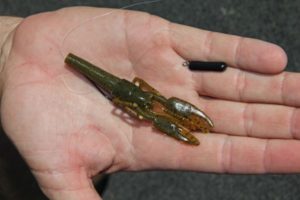
Other power-shot pluses include better castability and a quick fall rate, both of which can get your bait into tight quarters where a lighter rig might struggle with lesser precision. And, while traditional light drop-shots rely on persistence, the power-shot’s faster fall often triggers reaction strikes.
“You can be just as effective with 15- to 20-pound line and flipping (a power-shot) shallow in heavy cover,” Blaylock said. “It works really well in bushes — you just have to shorten your leader so you’re not tangled up as much.
“If I’m pitching a drop-shot around heavy cover, I don’t usually go over a 6- or 8-inch leader. If you’re going to throw it offshore, you might go up to 12 inches. You just have to get out there and experiment with it.”
As Gleason noted, the heavy finesse concept might be your primary tactic or a follow-up, depending on the scenario. He’ll adjust during a day, as needed.
But if a previous day’s results clearly indicate bass have soured on a traditional presentation, he might start the next morning with a heavy finesse look.
“With these heavy finesse techniques, it’s something you have in your arsenal,” he said. “You try to have a rod rigged up for it, if you know the conditions are lining up for it.”
Whenever you think a situation might call for a heavy finesse rig, Gleason suggests giving it 20 to 30 minutes to see if it makes a difference for you.
If it doesn’t do the trick, it’s a safe bet that the fish are just not interested. Call it a negative feeding mood, but no sense belaboring the situation.
At that point, it’s probably best to relocate and give those heavy finesse rigs a new stage on which to display their fish-tempting appeal.
How to get bottom rigs unhooked when bass fishing
If the heavy finesse strategy has a hang-up, then we’ve punned our way into the explanation — hang-ups, snags, entanglements.
The fact is that beefed-up finesse rigs might tempt us to leverage presentations around cover or structure with a taste for tackle.
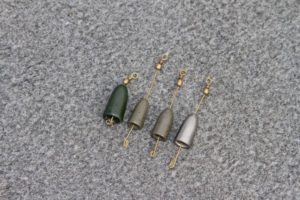
Ideally, stouter baitcasting gear and heavier line will enable us to pull snagged rigs free, but FLW Tour pro Larry Nixon uses a rigging strategy that allows him to power-shot with rarely the need to break off.
After tying on his drop-shot hook, he’ll attach his sinker with a 1 ½-inch brass wire stem with swivel on one end. Tying the tag end of his drop-shot leader to the swivel, he’ll runs the wire’s tag end through a slip sinker and uses needle nose pliers to loop the wire so it holds the weight.
If the rig snags, Nixon’s heavier baitcasting outfit will straighten the wire and all he loses is the sinker.
Nixon’s wire accessory is no longer commercially offered, but homemade versions can be made with wire found at home-improvement stores.
Saving money on tackle is good, but saving the time of rerigging means less down time — a key benefit when he finally coaxes those tough fish to bite.
“This is the best drop-shot rig ever invented,” Nixon said. “It will not straighten out unless you get hung up and pull really hard.
“You can straighten it out and just get your wire back.”
Other heavy finesse bass-fishing tactics
Drop-shots aren’t the only finesse rigs that can be beefed up to provide bass a bite-enducing curve ball. Here are some other options:
- Shaky heads — A leadhead jig designed for a bottom posture that stands the hook upward, the shaky head is a classic finesse tool for docks, natural wood and anywhere the fish might need a slow, steady presentation.
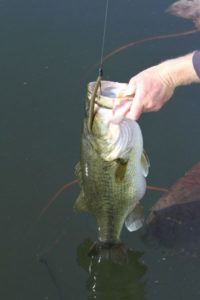
However, swapping the usual skinny finesse worms for a 5- to 6-inch Senko or a big ribbontail worm instantly expands the profile and offers the fish a bigger package in the same delivery form.
- Better with a bullet — Swimming a Senko around grass and lily pads might be considered a finesse approach, when compared to the intrusive tactics of pitching jigs and Texas-rigged creature baits into the vegetation.
However, making that finesse presentation a little heavier with a bullet weight on the lure’s nose changes the dynamics by allowing the bait to run deeper.
- Piling wrap — FLW Tour pro John Murray has a creative technique for fishing drop-shots around bridge pilings in current scenarios.
When wind, waves or river current pushes a drop-shot past the target zone too quickly, he’ll harness situational dynamics to create an enticing ruse.
Basically, Murray casts his drop-shot across the piling’s upcurrent face, let the water pin the rig against the structure and then drift past the piling a couple of yards.
With his line basically at a right angle, the drop-shot’s small worm or grub creates the presentation of a baitfish nibbling algae off the piling.
The reason this one qualifies for heavy finesse is the braided line and 15-pound fluorocarbon leader needed to hold up to the piling’s rough surface.
- Drop swimming — Pro Mark Maderos, adds an aggressive flair to his drop-shot rig. It’s the same basic concept as the power-shotting described earlier — heavier weight and a hefty creature bait or swimbait on the hook — but the difference is presentation.
Maderos isn’t pitching in and out of cover: He’s casting and retrieving (i.e., swimming) his dropshot along grass lines, docks and other likely bass haunts.
-
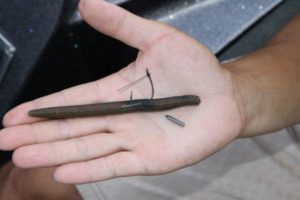
Nail weighting a Senko is a popular heavy finesse option for tournament anglers. Nail it — Wacky rigging a finesse worm or a soft stick bait is a year-round favorite in the finesse ranks, but one simple addition graduates this setup to the heavy ranks — a nail weight.
Slipped into the worm’s head, the nail weight not only makes the bait sink faster (and with a nose-first posture), but it also increases casting distance and presentation speed.
Essentially, the added weight adds the element of power fishing to your finesse rig.
